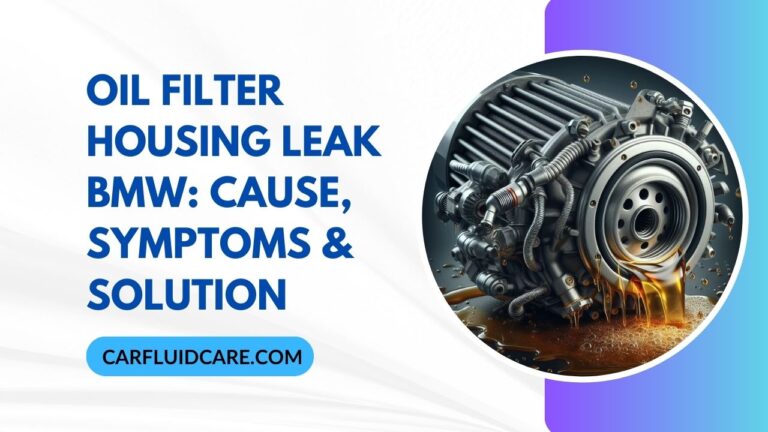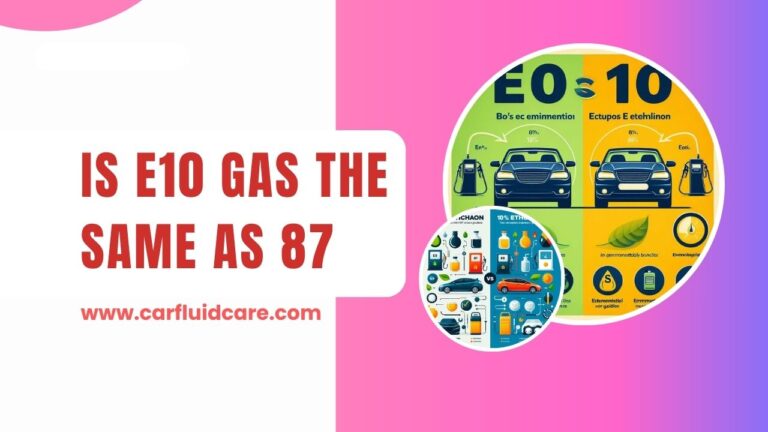Boon or Bust : Ford Ranger Catch Can Problems to Solutions
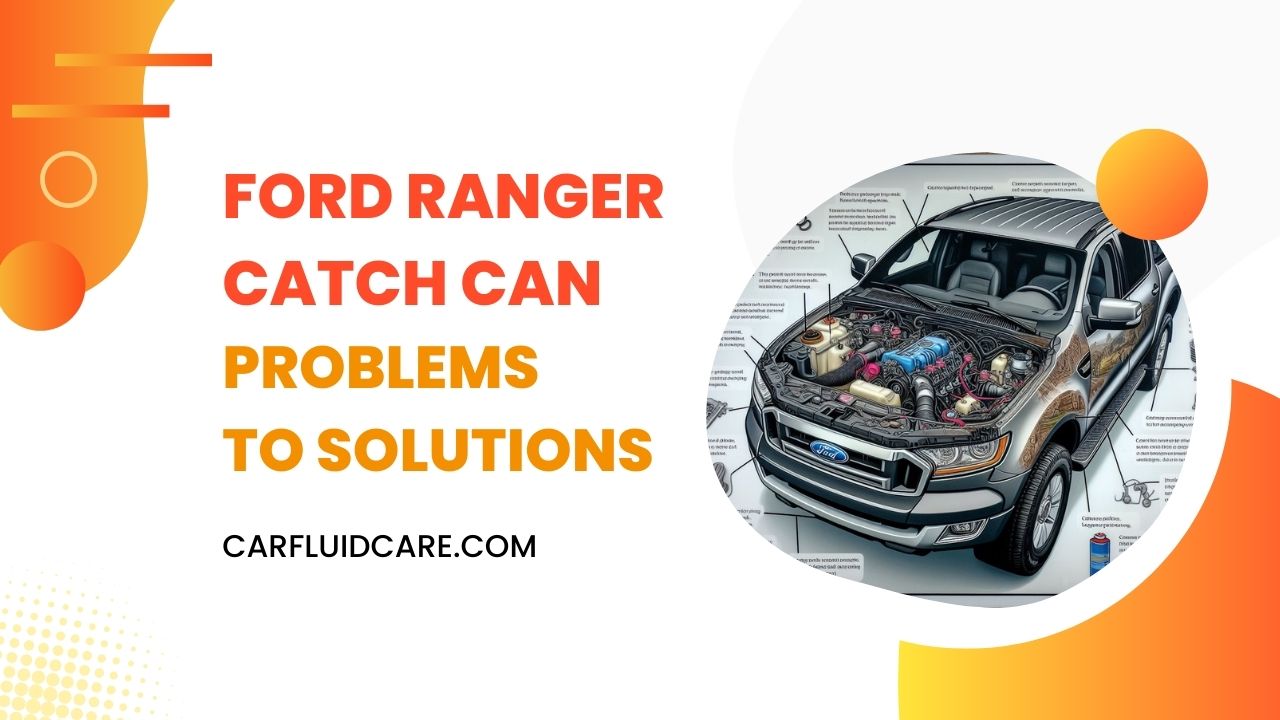
The Ford Ranger has long been a trusted companion for those who crave adventure and dependability on the road. However, like any vehicle, it’s not without its quirks and issues.
One of the most common problems that Ford Ranger owners may encounter with catch cans is Clogged or Full Catch Can.
Common issues with Ford Ranger catch can installations include leaks, overfilling, plugged lines, vacuum leaks, and the potential voiding of warranties.
Specific to Ford Rangers, concerns include the critical selection of a suitable mounting location to avoid excessive heat exposure, potential PCV valve issues, and the importance of choosing a catch can that is compatible with the Ranger model and engine type.
Proper installation, regular maintenance, and consideration of Ranger-specific factors are crucial for maximizing the benefits of a catch can while avoiding potential problems.
Today we will talk about all the problems with ford ranger catch can. And also give the easiest solution. Stay with us.
7 Ford Ranger Catch Can Problems & Solutions
Here are some common problems associated with catch cans in Ford Rangers and their solutions:
1. Catch Can Installation Issues
Solution: The most common problem is incorrect installation. Ensure that the catch can is properly mounted and connected to the PCV system following the manufacturer’s instructions. This can prevent leaks and other installation-related issues.
2. Accumulation of Oil and Moisture
Solution: Catch cans are designed to collect oil and moisture from the PCV system. However, if they fill up too quickly, it can be a sign of excessive blow-by or other engine issues. Regularly check and empty the catch can to prevent it from overflowing.
3. Catch Can Clogging
Solution: Over time, catch cans can become clogged with the collected oil and debris. Cleaning or replacing the catch can’s internal filter or element periodically can resolve this issue and maintain proper function.
4. Oil Leaks
Solution: Some catch cans may develop leaks if not sealed correctly or if the hoses become loose. Ensure that all connections are tight and secure to prevent oil from leaking onto your engine bay.
5. Inadequate Maintenance
Solution: Neglecting regular maintenance of the catch can can lead to problems. Schedule routine checks and cleaning to ensure the catch can continues to function effectively.
6. Low-Quality Catch Can
Solution: If you’re experiencing persistent issues with your catch can, it may be due to a low-quality or improperly designed unit. Consider investing in a reputable catch can from a trusted manufacturer for better performance and reliability.
7. Incorrect Hose Routing
Solution: Ensure that the hoses leading to and from the catch can are routed correctly and are free from kinks or blockages. Proper routing is essential for the efficient operation of the catch can.
Read More About 7 Common Flashlube Catch Can Problems & Solutions
Bad Oil Catch Can Symptoms
Here are some signs that your oil catch can might be malfunctioning:
- Rough idling: A poorly functioning catch can can cause vacuum leaks or disrupt airflow, leading to inconsistent engine idle.
- Reduced power and acceleration: If the catch can restricts airflow or causes vacuum issues, it can hinder engine performance.
- Increased fuel consumption: Engine inefficiency due to airflow problems or vacuum leaks can lead to higher fuel usage.
- Leaks: Oil leaks around the catch can itself or its connections can indicate loose fittings, damaged seals, or overfilling.
- Frozen catch can: In cold climates, condensation can freeze inside the can, blocking airflow and causing engine issues.
- Unusual engine noises: Hissing or sucking sounds can indicate vacuum leaks caused by the catch can.
- Check engine light: Depending on the issue, the malfunctioning catch can might trigger a check engine light.

Ford Ranger Catch Can Kit – Best Catch Can Ford Ranger
Let check out the features, pros and cons of the best catch can ford ranger:
Mishimoto MMBCC-RGR-19PBE Oil Catch Can
Are you looking to boost the performance of your 2019 Ford Ranger with a 2.3L EcoBoost engine? Look no further than the Mishimoto MMBCC-RGR-19PBE Baffled Oil Catch Can.
This high-quality aftermarket addition is designed to enhance your truck’s performance while ensuring longevity and proper engine maintenance.
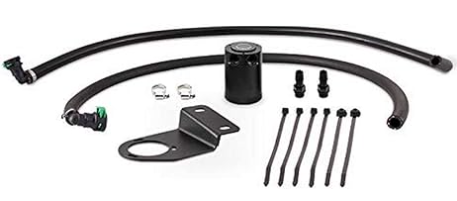
Features
- Direct Fit and Easy Installation: The Mishimoto Oil Catch Can is a direct fit for your 2019 Ford Ranger, with a 2.3L EcoBoost engine. It includes pre-installed quick-disconnect fittings for hassle-free installation.
- Durable Steel Bracket: A 2.5mm thick steel bracket comes with the catch can, ensuring it’s mounted securely out of the way of other engine components. This design also isolates it from engine vibrations, guaranteeing a lifetime of service.
- 3 oz. Capacity: The catch can has a 3 oz. capacity, extending the service intervals before needing maintenance.
- CNC-Machined Aluminum Barbed Fittings: These fittings ensure a secure connection between lines and the can, preventing leaks and ensuring efficient oil separation.
- Internal Air Diverter: An internal air diverter is integrated into the design, increasing air turbulence for improved oil separation.
- Fits with Stock Lariat Engine Cover: Worried about compatibility with your stock Lariat engine cover? Rest assured that this catch can is designed to fit seamlessly.
Applications
The Mishimoto MMBCC-RGR-19PBE Baffled Oil Catch Can is designed specifically for the 2019-2021 Ford Ranger equipped with the 2.3L EcoBoost engine.
Pros
- Easy installation with pre-installed fittings.
- Durable steel bracket for long-lasting use.
- Maintains proper octane levels, reducing detonation risks.
- Backed by a lifetime warranty.
- 3 oz. capacity extends service intervals.
- Secure, leak-free connections with CNC-machined fittings.
- Internal air diverter enhances oil separation.
- Compatible with stock Lariat engine covers.
Cons
- Itis an aftermarket accessory that may not be needed for all Ford Ranger owners.
New Ford Ranger Problems And Ford Ranger Problems Complaints
- Transmission issues reported in some Ford Ranger models.
- Complaints about engine performance, including rough idling.
- Electrical problems, such as malfunctioning infotainment systems.
- Suspension problems leading to a bumpy ride.
- Brake system complaints, including premature wear.
- Paint and rust issues in certain Ford Ranger trucks.
- Fuel economy concerns in specific models.
- Customer complaints about limited interior space.
- Some reports of noisy cabins in Ford Ranger trucks.
- Safety concerns regarding airbag deployments.
Ford Ranger Ecoboost Cans
There are a number of different catch can kits available for the Ford Ranger Ecoboost. Some of the popular brands include Mishimoto, UPR, and Mountune.
These kits typically include everything you need to install the catch can, including the can itself, hoses, fittings, and clamps.
Ford Ranger Provent Can Oil Separator
The Ford Ranger Provent Can Oil Separator is a popular aftermarket part designed to reduce the amount of oil entering the engine from blow-by gas in the crankcase ventilation system. This can help to protect your engine from several issues
Provent 200 Catch Can Kit: 19-24 Ford Ranger Oil Catch Can
Upgrade your Ford Ranger 2.3 Ecoboost with the innovative UPR Dual Valve Oil Catch Can kit, designed for optimal performance and engine protection.
Engineered with precision and quality components, this catch can system boasts a sleek design and easy installation, ensuring a seamless fit in your engine bay.

Features
- Show Quality Finish: Enhances the aesthetics of your engine bay with its polished appearance.
- Hi-Flow Billet Check Valve: Ensures efficient evacuation of crankcase gases, improving overall engine performance.
- Exclusive 4 Stage Design: Utilizes innovative technology to trap oil and contaminants effectively.
- Adjustable Mounting Bracket: Offers versatility with 360-degree rotation for customized installation.
- Plug N Play™ Fittings: Simplifies installation and maintenance, allowing for quick release and hassle-free operation.
- Oil Resistant UPR Braided Hose: Provides durability and reliability, ensuring long-lasting performance.
- Black Anodized Finish: Adds a stylish touch to your engine bay while offering corrosion resistance.
Applications
Compatible with 2019-2024 Ford Ranger 2.3 Ecoboost models, this catch can kit is designed to meet the specific needs of your vehicle, providing superior engine protection and performance enhancement.
Pros
- Efficiently captures oil vapor and contaminants, protecting the engine from potential damage.
- Easy to install with Plug N Play™ fittings and adjustable mounting bracket.
- Enhances engine performance by improving throttle response and fuel economy.
- Durable construction with high-quality materials ensures long-term reliability.
- Sleek design adds a visually appealing touch to the engine bay.
Cons
- Not CARB EO certified, designed for racing or off-road use only, not legal for sale or use in California.
UPR Catch Can Install
Here’s a general overview of the steps involved:
Step 1: Locate Installation Area
Determine where you want to install the catch can. Typically, it’s mounted in the engine bay, preferably in an easily accessible location.
Step 2: Prepare the Engine
Before installation, make sure the engine is cool and turned off. Disconnect the battery to prevent any electrical mishaps.
Step 3: Mount the Catch Can
Use the mounting brackets or hardware provided with the catch can kit to securely attach it to the chosen location in the engine bay.
Step 4: Connect Hoses
Identify the crankcase breather hose and the PCV hose. Disconnect these hoses from their original connections and attach them to the appropriate ports on the catch can.
Step 5: Reconnect Battery
Once the installation is complete, reconnect the battery.
Step 6: Test Run
Start the engine and let it run for a few minutes to ensure everything is functioning properly. Check for any leaks or unusual noises.
Read Also Troubleshooting: Car Losing Oil With No Leak Or Smoke
Provent Catch Can 200 Series
The Provent Catch Can 200 Series is designed specifically for Toyota Landcruiser 200 Series vehicles with 4.5L TD engines. It is an oil separator kit that helps to protect your engine from the harmful effects of blow-by gases.
Ford Ranger Px2 Catch Can
There are different catch can kits available for the Ford Ranger Px2, depending on the engine size (2.2L or 3.2L) and model year (2015-2023).
Provent Catch Can 79 Series
The Provent Catch Can is a popular oil separator kit specifically designed for Toyota Land Cruiser 79 Series vehicles with 1VD-FTV 4.5L V8 turbo diesel engines (model years 2007-2022). It helps protect your engine from the harmful effects of blow-by gases, offering numerous benefits:
Provent Catch Can Ford Ranger
Provent Catch Cans are well-regarded oil separator kits designed for various Ford Ranger models, particularly those equipped with diesel engines. They primarily address the issue of blow-by gases, which are unburnt fuel and air escaping the combustion chamber and entering the crankcase.
Ford Ranger Problems Today
Here are some of the most commonly reported issues with the Ford Ranger:
- Gearbox slippage: It can be caused by a number of factors, including worn clutch plates, low transmission fluid, or a faulty torque converter.
- Shifting problems: Some Rangers may experience difficulty shifting gears, which could be due to a faulty solenoid, valve body, or wiring harness.
- Crankshaft seal leak: This leak can cause oil to seep out of the engine, which can lead to low oil levels and engine damage.
- Turbocharger failure: This can be a costly repair, and it can be caused by a number of factors, such as low oil pressure, contaminated oil, or excessive boost pressure.
- EGR valve problems: The Exhaust Gas Recirculation (EGR) valve can become clogged or faulty, which can reduce engine performance and fuel economy.
- Fuel injector problems: Clogged or dirty fuel injectors can cause a number of problems, such as rough idling, engine misfires, and decreased fuel economy.
- Suspension problems: Some Rangers may experience issues with the suspension, such as worn shocks, broken springs, or loose control arms.
- Electrical problems: Electrical problems can be caused by a number of factors, such as faulty wiring, corrosion, or a bad battery.
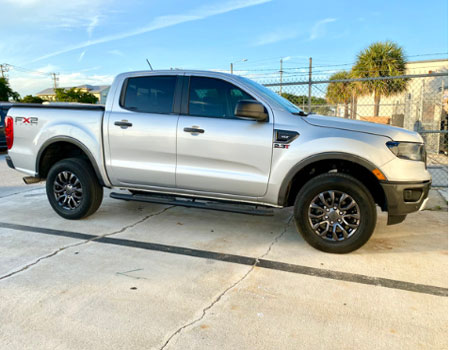
4×4 Catch Can Maintenance
Here’s a breakdown of the key aspects:
- Draining: A general rule of thumb is to drain it every 5,000-10,000 kilometers,.
- Cleaning: Some catch cans have removable filters that require cleaning or replacing periodically, as per the manufacturer’s recommendations. This could be every 10,000-20,000 kilometers or annually.
- Use high-quality synthetic oil with your 4×4, as it can help reduce blow-by and extend the catch can’s service life.
- Consider the environment when disposing of drained oil and cleaning solvents. Recycle used oil and use environmentally friendly cleaning products.
- If you’re unsure about any maintenance procedures, consult a qualified mechanic for assistance.
Ben Heselev Catch Can Problems
Ben Heselev catch can issues:
- Oil leaks: Persistent leaks from catch can
- Clogged lines: Obstructions in the lines leading to reduced efficiency
- Mounting problems: Difficulty in securely mounting the catch can
- Maintenance issues: Regular cleaning and maintenance required for optimal performance
- Compatibility concerns: Compatibility with vehicle model and engine specifications may affect installation and performance.
FAQs
Does a Ford Ranger collect a CC?
No, a Ford Ranger does not collect a cubic centimeter (cc).
Do you need a catch can?
A catch can is a device used in automotive applications to capture and separate oil and moisture from crankcase ventilation gases. It helps prevent oil and contaminants from entering the intake system.
Do HPD catch cans catch a lot of oil?
Yes, HPD cans capture oil mist from blow-by gases, amount varies based on driving habits and engine condition.
What does a catch can do on Ford Ranger?
Traps oil vapor before entering intake, protecting intercooler and preventing carbon buildup on valves.
Do turbo engines need a catch can?
Not essential for all turbo engines, but beneficial in some, especially modified or driven hard.
Does a catch can help with EGR valve?
Yes, by reducing oil entering intake, reducing EGR valve contamination and potential issues.
Does a catch can improve fuel economy?
Marginal improvement possible due to cleaner intake and potentially less restriction.
How important is a catch can?
A catch can is crucial for preventing oil and other contaminants from entering the intake system, reducing carbon buildup, and maintaining engine performance. It helps extend the life of the engine.
Conclusion
Here is all about ford ranger catch can problems. Some Ford Ranger owners have reported issues with catch cans, including installation challenges and concerns about their effectiveness.
It’s essential to carefully follow instructions and consider user experiences before installing a catch can.

